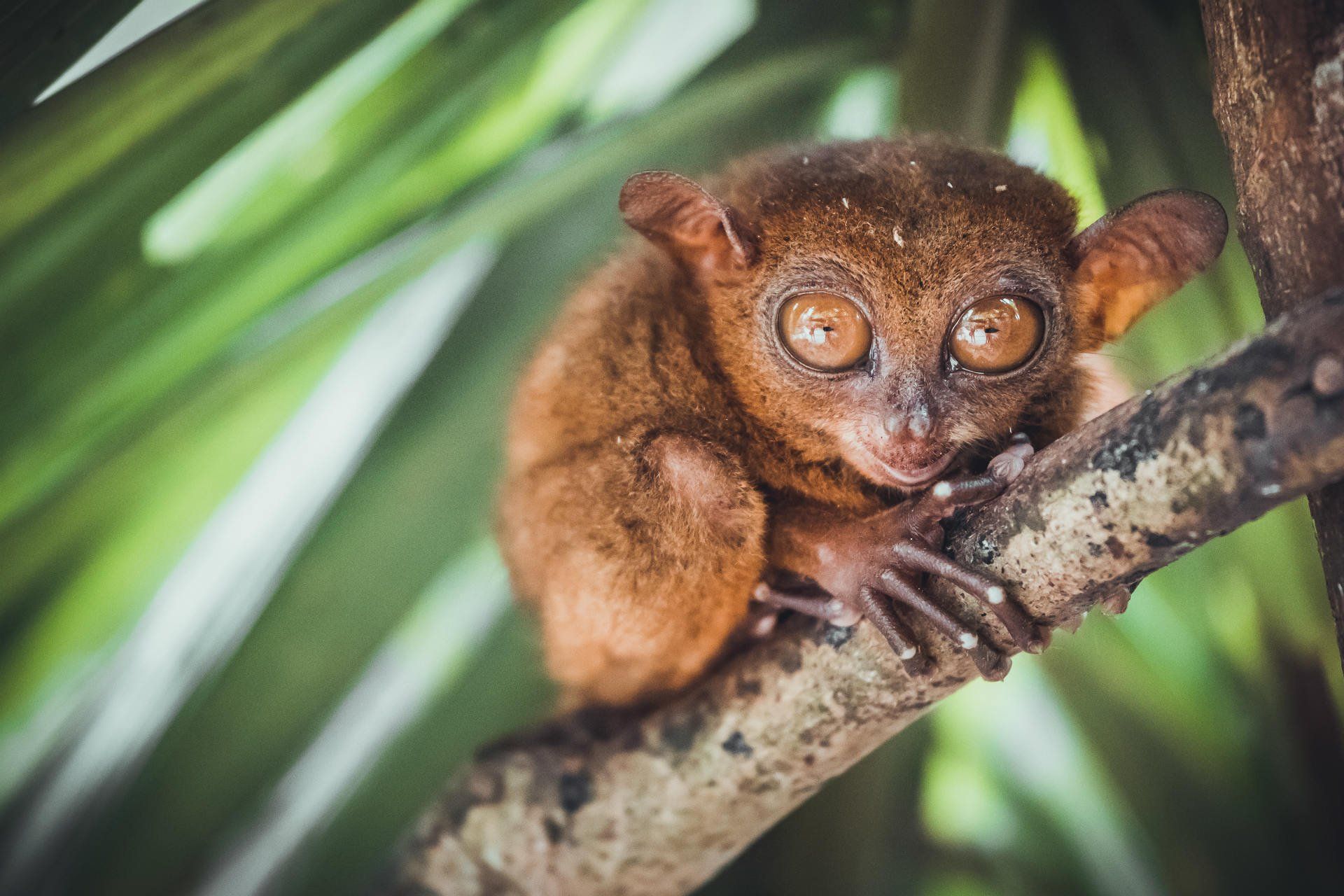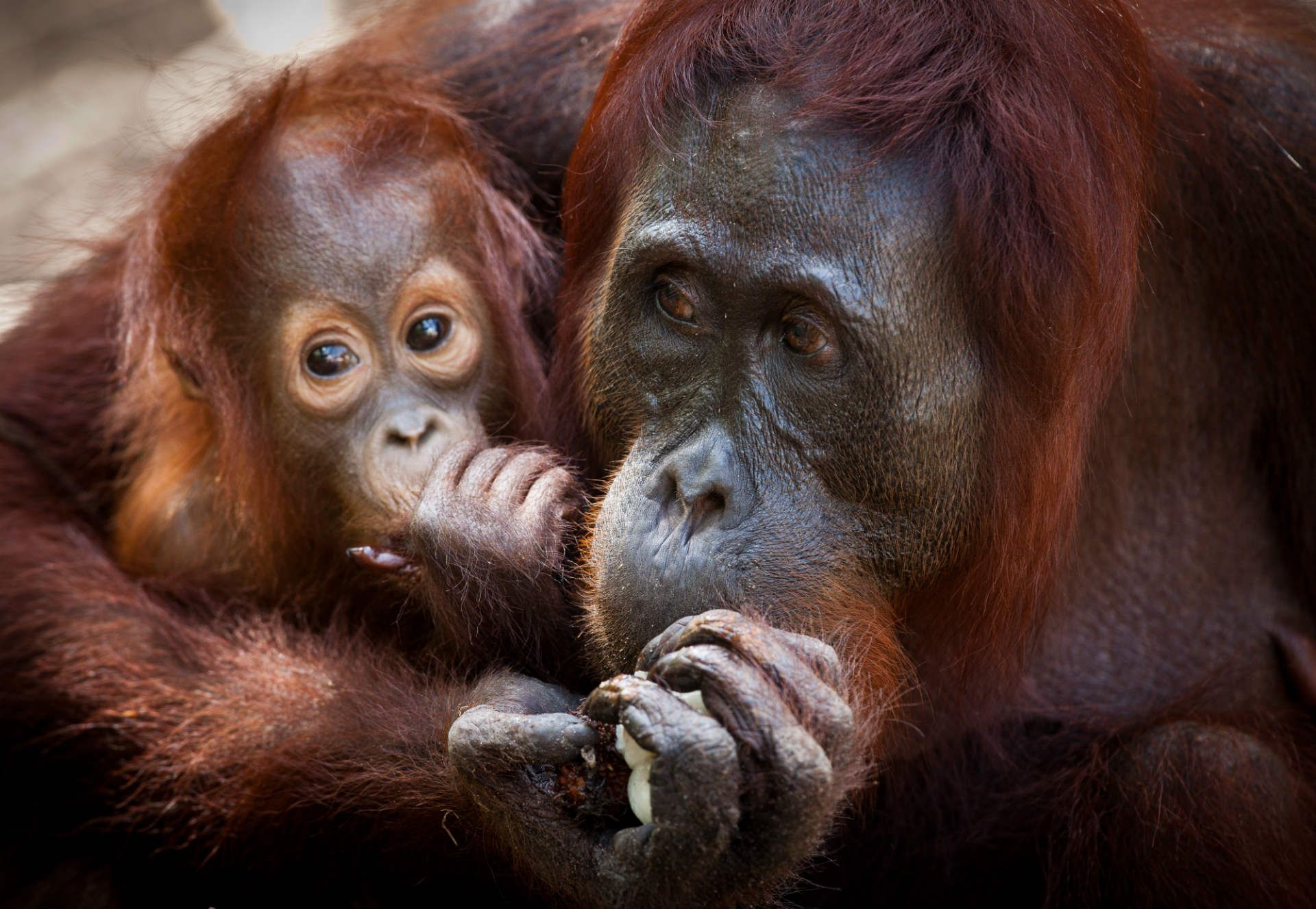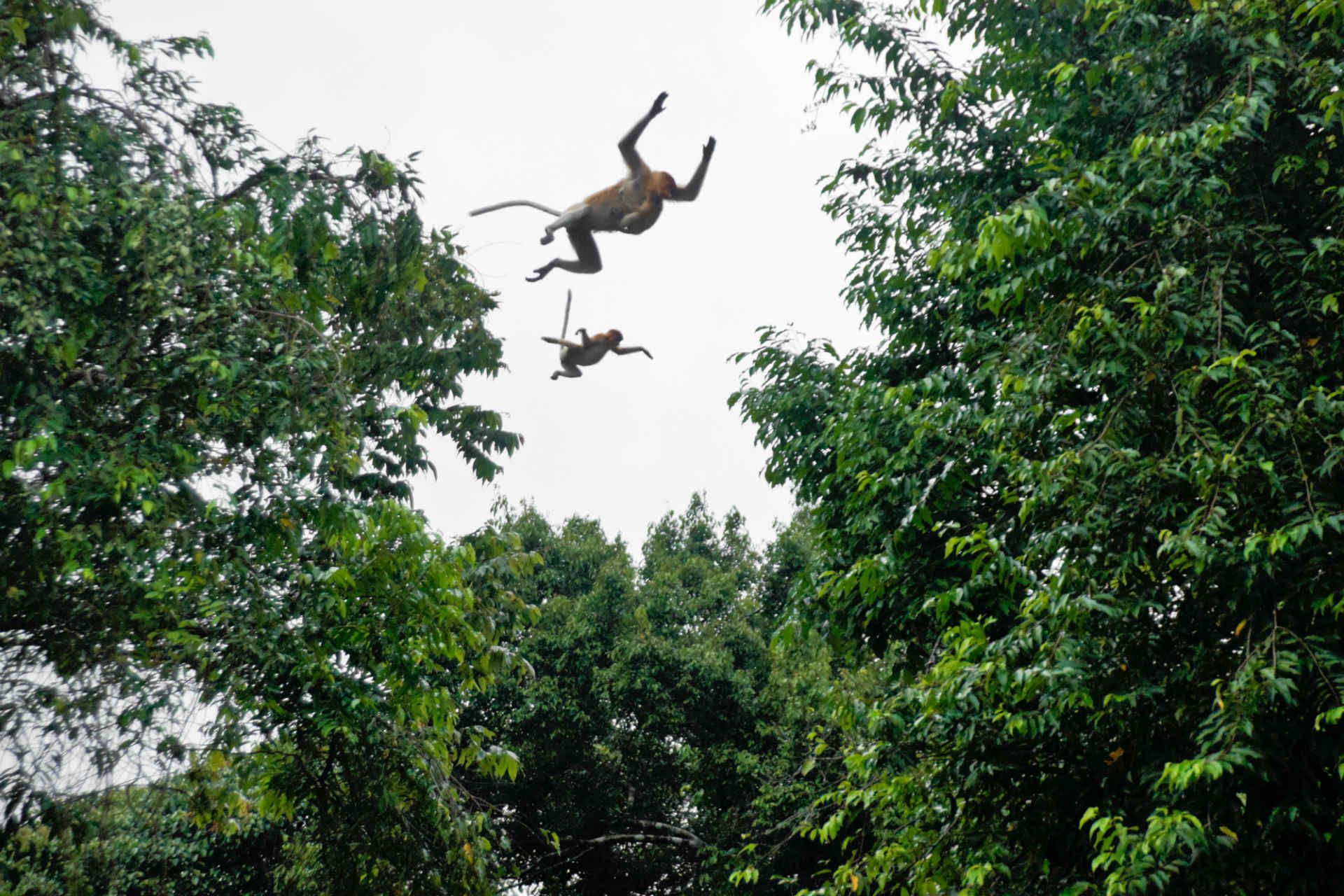- Nature & Wildlife
- National Parks & Reserves
- Wildlife
- Malaysia
- Indonesia
- Inspiration
- See & Do
- Travel Tips
Planning your own trip? Prepare for your trip
Use Rough Guides' trusted partners for great rates
Book your individual trip, stress-free with local travel experts
Wild about wildlife? Bump Borneo to the top of your list. Split between Malaysia, Indonesia and tiny Brunei, this island in Southeast Asia’s Malay Archipelago is a biodiversity goldmine — home to carnivorous pitcher plants, pygmy elephants, and, most famously, orangutans.
These endangered apes are only found in two places on Earth: here and on Sumatra. So if seeing orangutans in the wild is on your radar, Borneo is where you want to be. From protected jungle reserves to orangutan rehabilitation centres, there are plenty of ways to spot them — ethically and up close.
Here’s your guide to where and how to see orangutans in Borneo.
Borneo, the third-largest island in the world, is split between Malaysia (Sabah and Sarawak), Indonesia (Kalimantan), and Brunei. Its ancient rainforests — some over 130 million years old — make it one of the last strongholds for wild orangutans.
These aren’t just any apes. Orangutans are Asia’s only great apes and the largest tree-dwelling mammals on the planet. Their name, orangutan, comes from Malay: “man of the forest.” And once you see one swinging overhead, the name makes perfect sense.
Borneo’s orangutans are the island’s celebrity residents. They live mostly alone in the lowland rainforests, spending their days high in the canopy and gorging on wild fruit. You’re unlikely to find them in groups — they’re solitary by nature — but with the right guide and a bit of patience, you’ll spot them in the wild.
Just over a century ago, there were more than 230,000 orangutans across Southeast Asia. Today, fewer than half remain. Borneo is home to an estimated 104,700 orangutans, and although they’re still classified as endangered, conservation efforts are helping to slow the decline.
There are several conservation centers and foundations in Malaysian and Indonesian Borneo working to protect them. Supporting these projects — by visiting responsibly — means you're contributing to their survival.

Orangutans in Borneo © Shutterstock
While orangutans are the stars of the show, they’re far from the only wildlife worth traveling for. Borneo is a jungle heavyweight: home to 222 species of mammals (44 found nowhere else), 420 bird species (37 endemics), and a dazzling array of reptiles, amphibians, and fish.
Here’s what else you might spot:

Orangutan in Borneo ©Shutterstock
When it comes to seeing orangutans in Borneo, not all spots are created equal. Some offer wild jungle treks, others provide close-up encounters with rescued apes learning to survive in the forest. But all of them share one thing: a serious commitment to orangutan conservation.
Whether you're cruising down a remote river in Kalimantan or watching young apes swing through the trees at a rehabilitation center in Sabah, these places offer your best chance at seeing orangutans — ethically, safely, and up close.
Sepilok is one of the most accessible and rewarding places to see orangutans in Borneo. Tucked into the rainforest just 22km from Sandakan in the Malaysian state of Sabah, this rural patch of jungle is home to some of Malaysia’s most iconic wildlife — including the rhinoceros hornbill and, of course, orangutans. It’s an easy addition to any Malaysia itinerary that includes wildlife or eco-tourism stops.
A 3km detour off the main road brings you to the Sepilok Orangutan Rehabilitation Centre, one of only a handful of sanctuaries in the world dedicated to rescuing and rehabilitating orangutans. Most of the apes here have been displaced by deforestation or rescued from the illegal pet trade. Some arrive orphaned and traumatized; others never learned how to survive in the wild. Here, they’re given a second chance.
Set in a protected 43-square-kilometer swath of lowland rainforest, the centre helps orangutans relearn essential jungle skills—climbing, foraging, and nest-building—before releasing them back into the forest. Visitors can observe their progress at different stages:
The centre is open daily, 9am–noon and 2–4pm. Get there early to beat the tour groups, and bring binoculars if you can.

Sun bear © Shutterstock
There’s more to Sepilok than just orangutans. The same jungle-fringed road leads to two standout wildlife centers:
Right across from the orangutan centre, this facility rescues and rehabilitates the world’s smallest bear — often targeted for traditional medicine or the exotic pet trade. The Bornean sun bear is adorable, yes, but also vulnerable.
About 2km further along Sepilok Road, the Rainforest Discovery Centre offers another perspective — literally. Its 347m-long canopy walkway puts you eye-level with the treetops and gives you a real sense of what it’s like to spend a night in the rainforest surrounded by the sounds of nature.

Get lucky, and you might see a tarsier in the Rainforest Discovery Centre, Borneo © Shutterstock
If you want to see wild orangutans in Borneo while floating down a river in the middle of the jungle, this is the spot. Tanjung Puting National Park, a UNESCO Biosphere Reserve in Central Kalimantan (Indonesian Borneo), is one of the best places in Indonesia to see orangutans in their natural habitat.
Your journey starts in Pangkalanbun, reachable by air from Jakarta, Pontianak, Banjarmasin, and other major Indonesian cities. Once there:
The boat ride is half the experience — drifting through tangled forest, spotting monkeys and hornbills in the trees, and waking up to the jungle chorus.
Tanjung Puting is famous for its orangutan feeding stations, which help supplement food during dry seasons. There are three key outposts:
Feeding sessions are public but serve a conservation purpose: raising awareness while providing a safety net for apes struggling with seasonal food shortages.
This park isn’t just about orangutans — it’s a full-blown jungle safari:
Travel tip: Ask your klotok captain to cut the engine and let the boat drift — it’s the most peaceful way to take in the jungle, with nothing but bird calls and splashing monkeys around you.

Orangutans in Kalimantan, Borneo © Shutterstock
If you're serious about supporting orangutan conservation, a visit to the Borneo Orangutan Survival Foundation (BOSF) is a must. BOSF operates two major rehabilitation centers in Kalimantan — Nyaru Menteng in Central Kalimantan and Samboja Lestari in East Kalimantan — both of which fit easily into an Indonesia itinerary focused on wildlife and ethical travel.
Located 28km north of Palangkaraya, Nyaru Menteng is home to over 300 orphaned and displaced orangutans. This is one of the largest primate rehabilitation facilities in the world, but it isn’t open to casual drop-ins — you’ll need to arrange a permit in advance to visit.
Visitors aren’t allowed to interact directly with the orangutans here, which is a good thing — this site is focused on rewilding apes, not entertaining humans.
If you want to see orangutans in Borneo while actively supporting conservation efforts, Samboja Lodge is the way to go. Managed by BOSF, the lodge offers immersive, low-impact travel experiences:
The lodge is open weekends (Saturday and Sunday, 9am–5pm) for visitors, but overnight stays are recommended to truly experience the setting. All profits go directly to conservation.
This isn’t just a Borneo orangutan tour — it’s responsible travel at its most meaningful.

As well as orangutans, keep your eyes peeled for proboscis monkeys in Tanjung Puting National Park © Shutterstock
Discover undefined's most captivating stories

Orangutan © jaiman taip/Shutterstock
Looking to stray a little further from the usual orangutan trails? These lesser-visited spots offer a mix of wild sightings, research-backed conservation, and remote jungle adventures. Orangutan encounters aren’t always guaranteed — but that’s part of the thrill.
A 90-minute 4WD ride from Lahad Datu, the Danum Valley is one of the last remaining patches of untouched lowland rainforest in Southeast Asia. That’s not marketing talk — it’s the verdict of the scientists from the South East Asia Rainforest Research Partnership, who’ve studied the area since the 1980s.
Near Lubok Antu, this remote park merges with the Lanjak Entimau Wildlife Sanctuary, creating a large, protected rainforest area home to wild orangutans — an experience that easily ranks among the best things to do in Malaysia.
Just 20km from Kuching, Matang Wildlife Centre is part of Kubah National Park, a rainforest reserve famous for its palm species and network of walking trails.
For a bonus destination outside of Borneo, head to Bukit Lawang in Gunung Leuser National Park, Sumatra. The Bohorok Orangutan Centre no longer rehabilitates apes, but it’s still one of the top places to see orangutans in the wild.

Orangutans doing their thing in Borneo © Shutterstock
Before you grab your boots and binoculars, here are a few things to know to make your orangutan adventure smooth, safe, and worth every sweaty step.

Borneo © Shutterstock
Inspired to see orangutans in Borneo for yourself? Get yourself The Rough Guide to Malaysia, Singapore and Brunei to help plan your trip.
written by
Olga Sitnitsa
updated 08.04.2025
Online editor at Rough Guides, specialising in travel content. Passionate about creating compelling stories and inspiring others to explore the world.
Use Rough Guides' trusted partners for great rates
Discover undefined's most captivating stories
Arrange your trip, hassle-free, with local travel experts
Arrange your trip with local travel experts